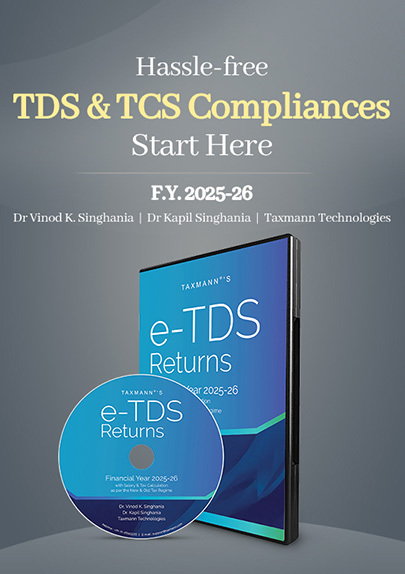Principal Purpose Test (PPT) Under DTAA to Be Applied Prospectively | CBDT
- Blog|News|Income Tax|
- 2 Min Read
- By Taxmann
- |
- Last Updated on 25 January, 2025

Circular 01/2025, dated 21-01-2025
The Central Board of Direct Taxes (CBDT) has issued Circular No. 01/2025 to guide the application of the Principal Purpose Test (PPT) under India’s Double Taxation Avoidance Agreements (DTAAs). The circular clarifies the implementation of PPT, a measure introduced to prevent the misuse of tax treaties, as part of India’s commitment to the Multilateral Convention to Implement Tax Treaty Related Provisions to Prevent Base Erosion and Profit Shifting (MLI).
The MLI took effect for India on October 1, 2019, modifying several DTAAs. The PPT is a significant provision introduced through this convention. It aims to deny treaty benefits if it is reasonable to conclude that obtaining such benefits was one of the principal purposes of a transaction or arrangement. However, the PPT allows the taxpayer to establish that the benefits are in accordance with the object and purpose of the treaty, ensuring that the DTAAs are applied to promote legitimate economic activities such as trade, services, capital flows, and movement of individuals.
The circular explains that the application of the PPT is prospective.
Treaties incorporating the PPT through bilateral negotiations (such as Chile, Iran, Hong Kong, China, etc.), PPT should apply from the date the DTAA or the amending protocol came into effect.
For treaties modified through the MLI, PPT shall apply as follows:
(a) For withholding taxes, the PPT applies to payments made in the previous year beginning after the MLI entered into force for both jurisdictions.
(b) For all other taxes, the PPT takes effect for the previous year starting after the end of six months from the date the MLI comes into force for both treaty partners.
In India’s case, this date is October 1, 2019, while the dates for partner jurisdictions can be verified using the OECD’s MLI database.
Further, the circular addresses the interaction of the PPT with certain treaty-specific commitments. Grandfathering provisions in the India-Cyprus, India-Mauritius, and India-Singapore DTAAs are excluded from the scope of the PPT. These provisions are governed by the respective treaties’ specific clauses and remain unaffected by the PPT.
The circular also emphasises that applying the PPT requires an objective assessment of facts on a case-by-case basis. Tax authorities should refer to additional resources, such as the BEPS Action Plan 6 and the UN Model Tax Convention (2021) while considering India’s reservations. These supplementary materials provide clarity and context for the invocation of the PPT.
Click Here To Read The Full Circular
Disclaimer: The content/information published on the website is only for general information of the user and shall not be construed as legal advice. While the Taxmann has exercised reasonable efforts to ensure the veracity of information/content published, Taxmann shall be under no liability in any manner whatsoever for incorrect information, if any.

Taxmann Publications has a dedicated in-house Research & Editorial Team. This team consists of a team of Chartered Accountants, Company Secretaries, and Lawyers. This team works under the guidance and supervision of editor-in-chief Mr Rakesh Bhargava.
The Research and Editorial Team is responsible for developing reliable and accurate content for the readers. The team follows the six-sigma approach to achieve the benchmark of zero error in its publications and research platforms. The team ensures that the following publication guidelines are thoroughly followed while developing the content:
- The statutory material is obtained only from the authorized and reliable sources
- All the latest developments in the judicial and legislative fields are covered
- Prepare the analytical write-ups on current, controversial, and important issues to help the readers to understand the concept and its implications
- Every content published by Taxmann is complete, accurate and lucid
- All evidence-based statements are supported with proper reference to Section, Circular No., Notification No. or citations
- The golden rules of grammar, style and consistency are thoroughly followed
- Font and size that’s easy to read and remain consistent across all imprint and digital publications are applied



 CA | CS | CMA
CA | CS | CMA
